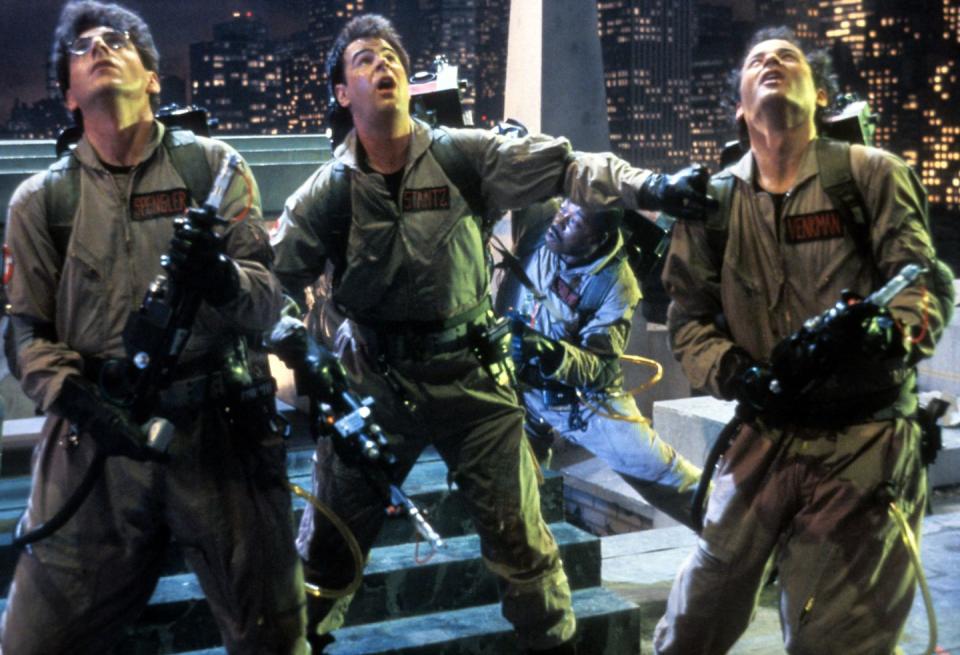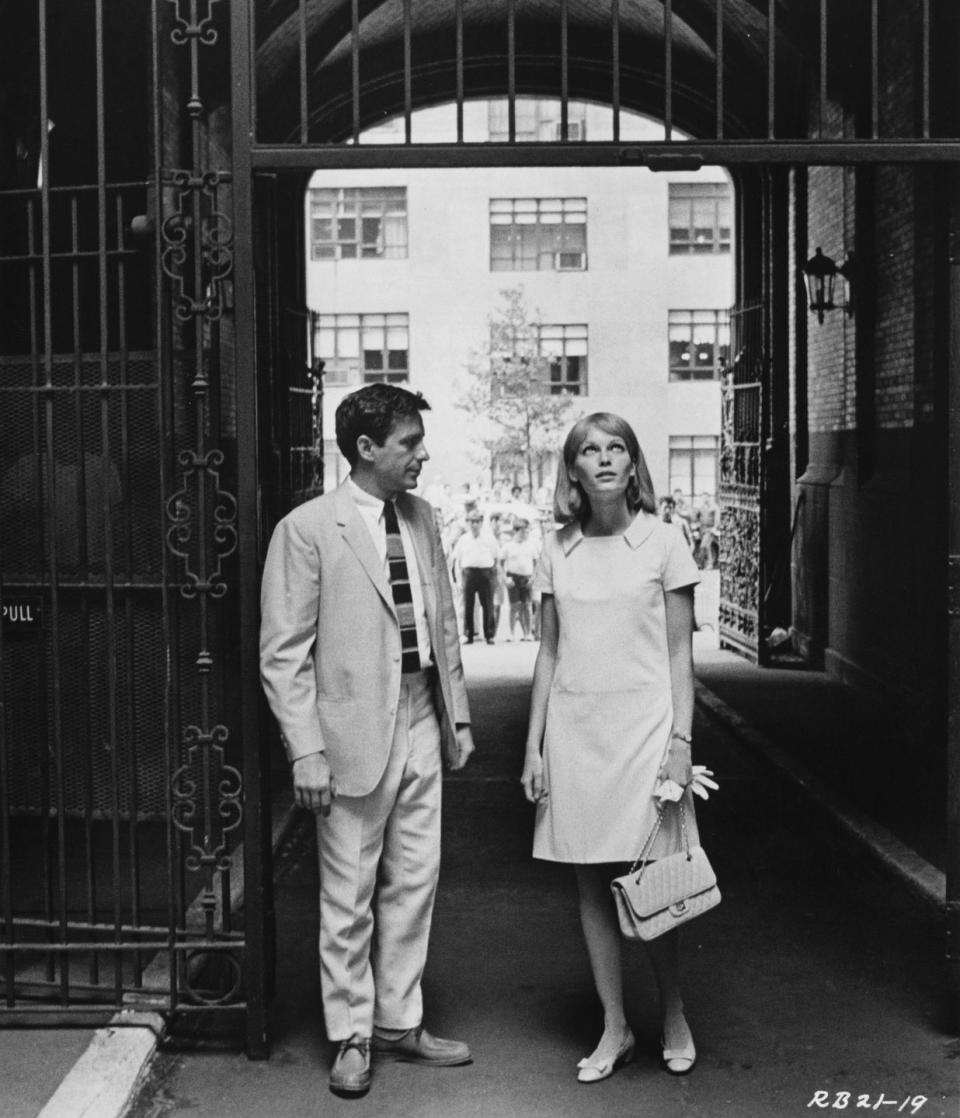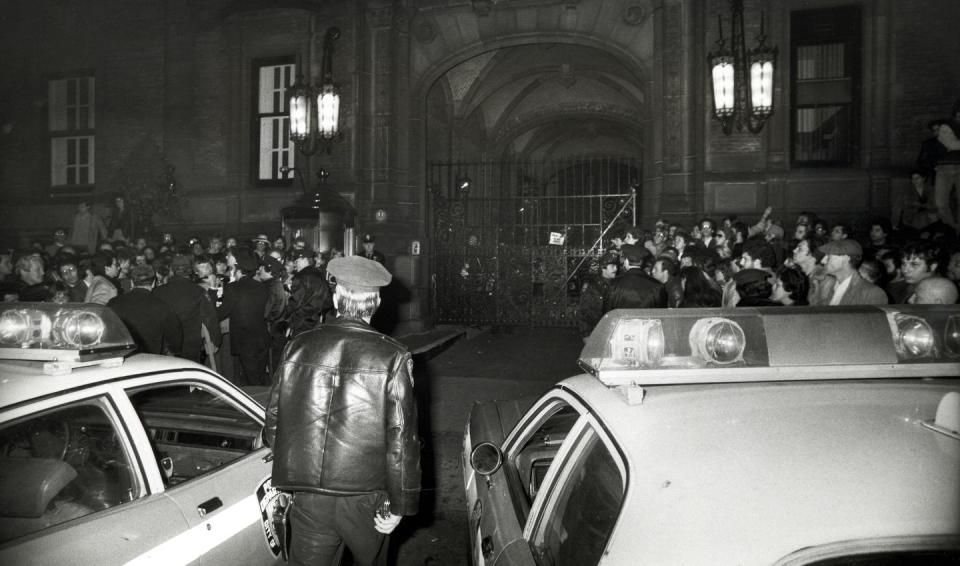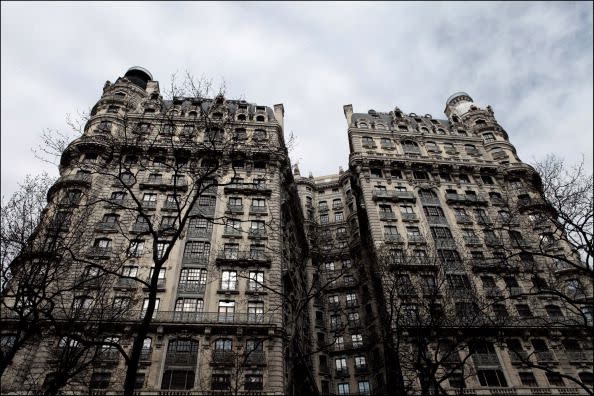Only Murders in the Building Proves the Upper West Side is NYC's Most Haunted Neighborhood

- Oops!Something went wrong.Please try again later.
In honor of season two of Only Murders in the Building, we're resurfacing this story from 2021.
Earlier this week, I was walking with my husband and toddler and ran into a neighbor in front of Zabar's. “Don’t go home by way of that street,” she said, pointing excitedly down 81st. “It looks like there was a murder. I’m guessing a man killed his wife!” In the days since, despite careful scouring of the West Side Rag, I have seen no corroboration of this theory.
But the moment captured, I think, something about the cheerfully ghoulish ethos of the Upper West Side, which for all its basic beauty, its bagels and kvetches, its bookstores and strollers, has always had a dark side. From Rosemary’s Baby to The Night Of to Hulu’s new comedy-mystery Only Murders in the Building, the area’s inherent contrasts provide a natural setting for truly horrible events and the ghosts that love them.

Bounded by the Hudson River to the west and Central Park to the east, Columbus Circle and Morningside Heights, the Upper West Side has an enduring and deserved modern reputation for shleppiness. Despite its once-thriving music and art scene, its diversity, its robust gay community, for the past few decades the neighborhood has seemed almost magically immune to the forces of chic.
What little remains of the liberal-crank element is dying off; the once-hip Saturdays Generation yuppies have aged; the Lincoln Center musicians have been priced out; the newcomers seem more interested in pumpkin spice fitness classes than the area’s often-colorful history (although that’s a horrible, lazy, and slightly dated generalization). The seedy days of Needle Park, Plato’s Retreat, and Mr. Goodbar are but a distant memory. Superficially, it’s the closest Manhattan comes to suburbia—just ask any of your friends when you relocate from Brooklyn. But let’s just say, there’s a reason the original Ghostbusters set up shop on Central Park West.

For one thing, this area was a veritable hotbed of 19th Century Spiritualism. The legendary Ansonia’s basement played host to myriad seances and psychics; the American Society for Psychical Research was founded (and still stands) on West 73rd Street. And to this day, New York’s only Spiritualist services take place at a church on West End Avenue (for the moment, you can attend virtual seances over Zoom).
Many buildings up here are old and sumptuous, designed to offer the luxury of town-houses in a a time when the area practically counted as the country. And the excesses of wealth, as we know, make for almost as many ghosts as does squalor. The most storied are all known to be haunted (I asked a realtor friend, who confirmed it, although as a rule real estate people are sensitive on the subject of hauntings; they’ve been cast as villains selling too-good-to-be-true mansions to naifs in the first scene of a horror movie once too often.) Rudolph Valentino strolls the halls of the Hotel des Artistes. There have been reports of James Baldwin’s disembodied voice reading aloud to his dying mother on West 71st. And the Ansonia is, not shockingly, absolutely crawling with long-dead mediums.

Rosemary’s Baby is, of course, the ultimate UWS horror story: a cheap, beautiful apartment in the legendary Dakota comes with strings, not least of which is having to socialize with one’s neighbors all the time. (Although presumably the demon spawn gets his own room, which is nothing to sneeze at.) But the Dakota was haunted long before Ira Levin wrote his classic—since its construction tenants have reported sightings of children in old-fashioned dress, a bearded gentleman, a phantom chandelier, flying objects, and a particularly scary-sounding grown man with a child’s face. John Lennon claimed to see a weeping woman; when he was murdered in front of the Dakota in 1980, Lennon’s own specter was added to the list.
This is also a neighborhood haunted by ghosts of another kind. Seneca Village—a settlement founded by freed slaves—was located roughly between West 82nd and 89th streets, and razed to make way for Central Park. The hundreds of residents protested the eviction but were ultimately displaced, and the village—and its graveyard—was quite literally buried under the paths bordering Central Park West.

In the 1930s and '40s the Upper West Side became a destination for thousands of those fleeing from Naziism, or displaced after the war; the neighborhood had long housed a sizable Jewish population, and emigres were required to provide an affidavit from an American relative. The Eclair Bakery—a mitteleuropean-style coffee house on West 72nd Street—became famous for its guestbook, where newly arrived refugees would sign their names and look frantically for those of friends who’d made it out. The Eclair is long gone, but Zabars still carries prune danish and strudels for the very few who still want it, most of them very old now.
The latest offering, Only Murders in the Building, is the most affectionate tribute to the Upper West Side since You’ve Got Mail. When washed-up actor Steve Martin exits a subway, it’s the 86th Street A/C. When preening director Martin Short crosses an intersection, it’s within steps of Barney Greeengrass. And when the mysterious true-crime aficionado Selena Gomez returns to the lavish pre-war building where they all live, it’s quite clearly filmed in the Belnord, one-time home of Isaac Bashevis Singer and Zero Mostel. There are surly strangers (the peerless Jackie Hoffman) and UppaBabies galore, and when the three would-be sleuths sit down to dinner, you just know the food is authentically mediocre. Even the credits roll in what looks like The New Yorker’s “NY Irvin” font—a magazine that might as well be the neighborhood's corporate sponsor. Of course these three people would live here —they’re kind of losers, and they kind of want to hide in plain sight.

But the show is also playing into the neighborhood’s stealth-Gothic grandeur, and its storied history. In the opening scene, Steve Martin’s Charles smugly announces that the city’s not where really bad things happen. “There are eyes on you everywhere!” Then, of course, he walks into a building called “The Arconia,” a murder occurs, and all three retreat to the time-honored comfort of having opinions about horrors, so as to live so closely with them.
You Might Also Like

